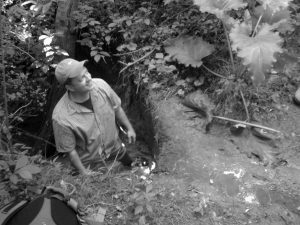Upland Suburban, Agricultural Areas Contribute “Lion’s Share” of Sediment Load Today
 Excessive sediment and the contaminants absorbed to sediment particles cause habitat and water quality problems in water bodies throughout the country. Efficient reduction in the sediment loads to receiving waters requires identification of the most prominent sediment sources.
Excessive sediment and the contaminants absorbed to sediment particles cause habitat and water quality problems in water bodies throughout the country. Efficient reduction in the sediment loads to receiving waters requires identification of the most prominent sediment sources.
Better knowledge of watershed sources and their relation to the loads delivered from large rivers was the inspiration for research summarized in a paper by UMaine’s Sean Smith, Assistant Professor in the School of Earth and Climate Sciences and the Senator George J. Mitchell Center, published online in the journal Geomorphology this month.
The research is of particular importance to watershed managers who must know the locations and relevance of problems in order to solve them – a need that is particularly acute given the need to be efficient with limited funds for strategies intended to protect streams, rivers, lakes, and estuaries.
Smith focused on the management problem by measuring watersheds and the water and sediment moving through them in the mid-Atlantic region. Results from the research help close a poorly quantified gap between hillsides and the outlets of large river draining to the Chesapeake Bay.
According to the article, upland hillside and headwater channel erosion in forest, agriculture, and suburban settings contribute the lion’s share of sediment in the modern landscape. Lowland valleys and floodplains downstream from the upland tributaries can’t pass the entire upland load at the rate that it is received. On a net basis, a quarter or more of the upland sediment load sits in the valleys for decades or more, continually influencing conditions in large river ecosystems.
The study relied on sedimentation measurements in ponds and reservoirs of varied sizes to quantify sediment loads. The measurements reveal that suburban housing developments built decades ago can still generate substantial sediment loads from erosion despite appearing to be physically stable. Calculations summarized in the paper indicate that the amount of sediment derived from lowland stream bank erosion is a proportionately small component of the load delivered from large rivers.
While results are specific to the portion of the mid-Atlantic region located just west of I95 in Maryland, the approach is transferable to other regions, including some places in Maine. The project also demonstrates a useful watershed sustainability solutions example through the stakeholder engagement with affiliates of the U.S. EPA Chesapeake Bay Program that helped frame strategic research targets.
